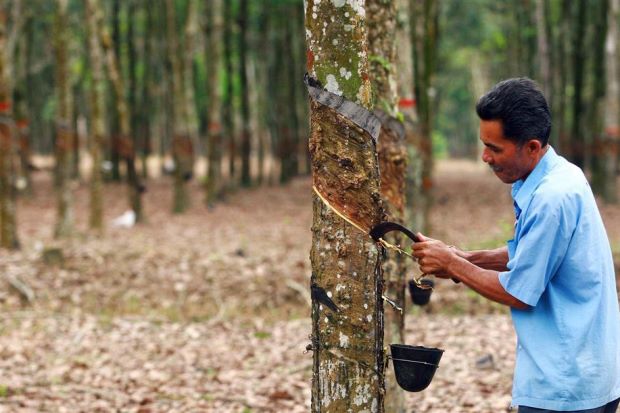KUALA LUMPUR: The region’s top traditional rubber producers – Thailand, Indonesia and Malaysia – believe the current low price of natural rubber (NR) does not reflect the economic fundamentals that affect it.

ITRC member countries account for 65% of global natural rubber (NR) production and 72% of world NR exports.
A statement issued by the International Tripartite Rubber Council (ITRC) and the International Rubber Consortium (IRCo), which represent these three major exporters, said they concluded this during a joint meeting between the council’s senior officers and IRCo’s board of directors.
The three member countries would continue to monitor and analyse the market trend as well as explore other possible measures towards strengthening NR prices to ensure that their smallholders will benefit from remunerative income, they said.
The three governments expressed concerns that the current downward rubber price trend and market factors were unrealistic. They were also confident on the health of NR market and that prices should adjust to reflect the fundamentals.
The recent meeting discussed the well-being of rubber smallholders and rubber industry in their countries, factors contributing to the rubber price and possible measures to improve NR prices.
Both ITRC and IRCo are encouraged by the findings of various technical analysis of the price movements on the Tokyo Commodity Exchange (TOCOM), Shanghai Futures Exchange (SHFE) and Singapore Commodity Exchange (SGX) that indicate that the market is entering a consolidation phase, signifying the establishment of a new momentum to set a new direction for the market.
“Also supporting the indication of a consolidation phase is the analysis of the open interest — the total number of open or outstanding (not closed or delivered) futures contracts that exist on a given day, delivered on a particular day – movement which confirms that TOCOM, SHFE and SGX are in oversold positions, leading to short covering in the near term,” they said.
ITRC and IRCo said the analysis was further supported by prevailing fundamentals as producing areas in the Southern hemisphere, particularly in Indonesia, are expected to experience slower production as the wintering season peaks.
“A reduction in production from Thailand and Malaysia is also anticipated due to low rubber prices and change in weather pattern, compounded by unusual heavy rains in northern Thailand which affected rubber production there,” they continued.
It is also expected that NR consumption for 2017 will increase further, supported by better world gross domestic product (GDP) growth, where the positive GDP growth of major economies and improving commodity indices will further enhance the sentiment in NR markets.
They noted that in the July forecast, the International Monetary Fund’s (IMF) revised estimates of the world GDP growth to 3.5% for 2017 was higher than its earlier January forecast of 3.4% and higher than the 2016 GDP performance of 3.2%.
The GDP of all major NR consuming countries, including the United States, Japan, European Union and India, are all forecast to improve, while China’s GDP is forecast to remain at 6.7%.
Automobile sales in the first six months of this year in major NR consuming countries — China, EU & Japan — also recorded a positive growth of 3.8%, 4.7% and 9.2% respectively.
“We strongly believe that all these fundamentals and consumption patterns have resulted to an improvement of the NR stock-consumption ratio from 3.02 at the beginning of 2016 to 2.38 in July 2017 and is expected to further decrease to 2.34 by the end of 2017,” said IRCo chairman Mesah Tarigan.
Meanwhile, the Association of Natural Rubber Producing Countries (ANRPC) has forecast a deficit in global supply-demand of NR in 2017 even though its projection has not taken into consideration the potential deduction of NR production in Thailand and Malaysia due to low prices and changes in weather pattern.
Aside from exploring possible measures towards strengthening NR prices, the three top exporters will focus on balancing long term supply and demand. “In this regard, (we) are were encouraged by plans of the Thai Government to permanently remove 240,000 ha of rubber area which will permanently remove the supply of 360,000 tonnes of NR per year,” the statement said.
“Thailand, Indonesia and Malaysia will continue to explore long term measures to enhance domestic consumption of NR and are committed towards cooperation under the framework of ITRC to ensure long-term price stability of NR.”
ITRC member countries account for 65% of global NR production and 72% of world NR exports.
IRCo is a company co-owned by the three major producers and exporters of NR – the governments of Thailand, Indonesia and Malaysia.




























